The Baltic Sea is becoming more and more attractive for sea tourists
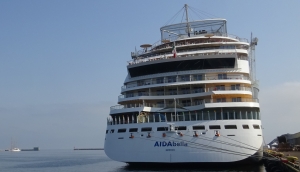
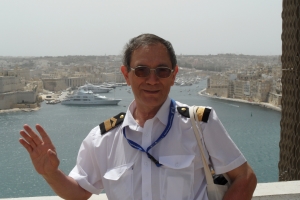 By Marek Grzybowski
By Marek Grzybowski
In 2024, more cruise lines will return to ports in the eastern Baltic Sea region. In addition, several ports, including smaller ones, expect an increase in the number of calls this year compared to last year, according to a recently published market analysis by Cruise Baltic.
Cruise Baltic was established in 2004 and is a business network of 32 ports serving cruise ship operators in the Baltic Sea region. The aim of the organization is to promote the region among cruise ship owners and travel agencies. Cruise Baltic provides cruise lines with easy access and integration of interests for ports and coastal cities.
The year 2023 was characterized by a diversified schedule of cruises on the Baltic Sea. The situation in the region is definitely influenced by the geopolitical situation. It resulted in a decrease in the number of calls in eastern ports, while in the western part of the region the situation was different, say the authors of the report.

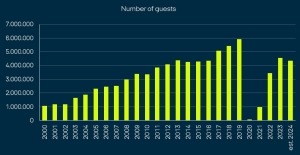
Collapse and recovery
After the market was disrupted during the pandemic, the number of sea tourists increased by 32% in 2023 compared to 2022. The poor result in 2022 was due to St. Patrick’s departure from the cruise network. Petersburg. Russia’s attack on Ukraine caused some shipowners who withdrew from St. Peterburg, they took cruises out of the Baltic Sea altogether. Others radically changed their routes, focusing on the western Baltic Sea.
The market was weaker in 2023 than in 2022. There were 23% fewer port entries and 5% fewer round trips. In the years 2017-2023, the number of sea tourists traveling by cruise decreased by 1.7% from over 5 million passengers to approximately 4,550,000. passengers. But in 2019 it was 6 million. In 2021, ship decks were empty and port cities were visited by approximately 1 million passengers.
In 2022, Baltic ports have already received 3,450.5 thousand. guests who arrived on cruise ships. This represented an increase in the number of maritime tourists of almost 256% compared to 2021. This is significantly lower than in 2019, the last “normal” year, but has improved significantly since the pandemic. The year 2022 was also a breakthrough in terms of the number of cruises performed. The number of calls increased from 648 in 2021 to 2,415 in 2022. Baltic Cruise emphasizes that “in 2022, calls were made every month to at least one Baltic port.”

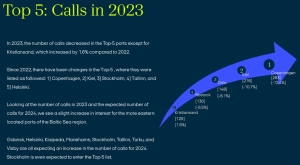
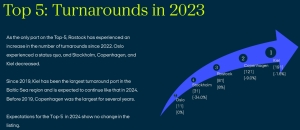
Ambitious plans
Tour operators’ plans and advised cruises show that a favorable trend for the Eastern Baltic Sea has emerged. In 2024, several cruise operators reported that some of them had regained interest in eastern ports. Klaipeda expects an increase in the number of connections by 41 percent, Gdańsk by 90 percent, and Turku by 133 percent – according to the announced cruises, Cruise Baltic informs.
In 2024, the ports in Gdańsk and Gdynia will also revive. The first cruise ship this season will dock in Gdańsk on April 22. Tourists will disembark at the Emigration Museum in Gdynia on May 2. The port of Gdynia will be visited by 11 ships with passengers, and 27 cruises will moor in Gdańsk. Many of them will return to port several times.
As a result, cruise operators will direct their ships to the port of Gdańsk 62 times, and ships with sea tourists will moor in Gdynia 41 times. AIDAMar will visit Gdynia as many as 9 times. M/S Clio will transport tourists to Gdańsk 8 times.
– Last year’s situation required new, strengthened activity for our region. This, combined with our new strategy, allowed us to redefine and create the history of the Baltic Sea region. The goal of our work is to support our members and support positive development in the region in every possible way, said Klaus Bondam, director of Cruise Baltic, commenting on the results of operators and ports operating within the organization.
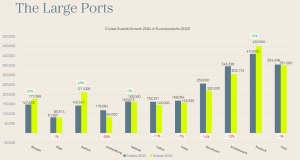
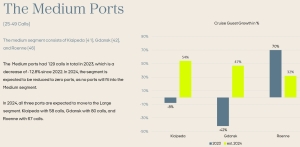
The Baltic Sea is on trend
Cruise Baltic emphasizes that “Travel trends as well as geopolitical conflicts influence cruise routes in the Baltic Sea region.” This is also visible in Polish ports.
– We are very pleased with the development [of maritime tourism – Ministry of Economy] and we see growing interest in several destinations in the Baltic Sea. Cruise guests, like all other tourists, are looking for new and unique experiences, and by promoting new aspects of our region to cruise lines, we maintain interest in the Baltic Sea among our target group, says Klaus Bondam, director of Cruise Baltic.
Cruise Baltic also notes that we are dealing with an increase in the size of ships headed to the Baltics. Among tourists choosing Baltic ports, there is a “growing interest in cruises on smaller ships and a change in the number of port calls.”
Cruise ports expecting more calls and visitors include both popular cruise ports and smaller ports. New destination cruise destinations are emerging. For example, Arendal will record an increase in the number of arrivals by 77 percent in 2024. Nyborg will be visited by twice as many ships as in 2023. The number of ships mooring in Helsingborg will increase by 125%. Maritime tourism has revived after the pandemic, which hit the pockets of operators and coastal cities. The upheaval in maritime tourism has caused tour operators to look for new, interesting destinations, and tourists have the opportunity to discover unknown attractions of the region.
The Baltic Sea is still an attractive region. But tourists only have a chance to visit Polish seaside cities. For many of them, the attractions of Kashubia and Żuławy, Kociewie, Warmia and Mazury are still unknown. Pomeranian tourist organizations have a lot of work to do to convince global tour operators to stay longer in Gdańsk or Gdynia.
